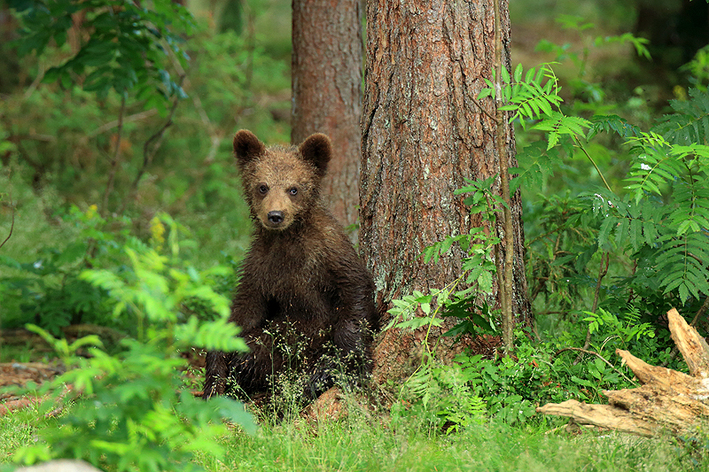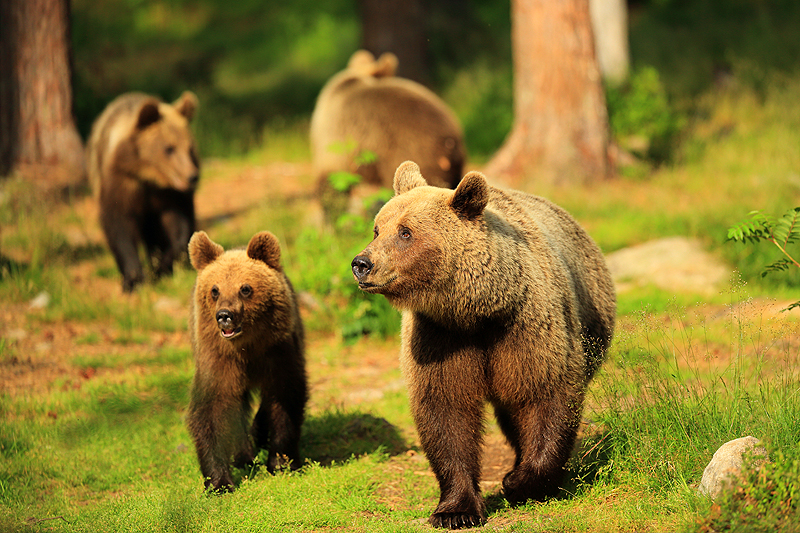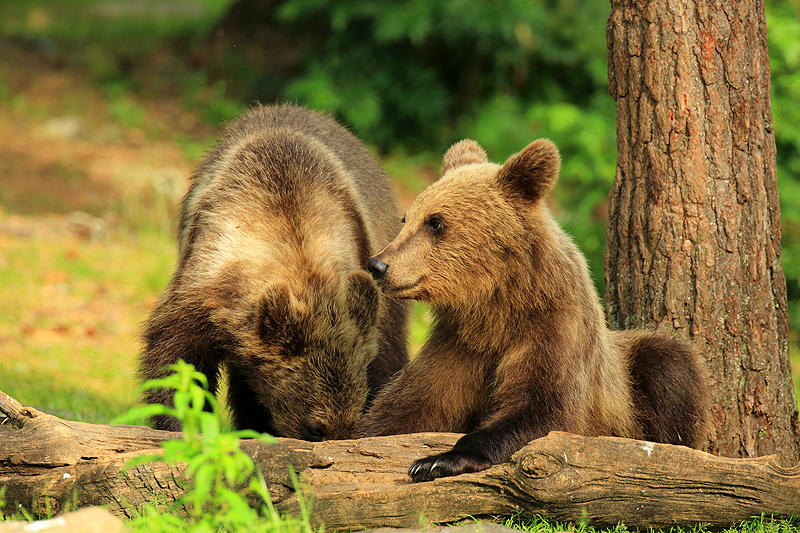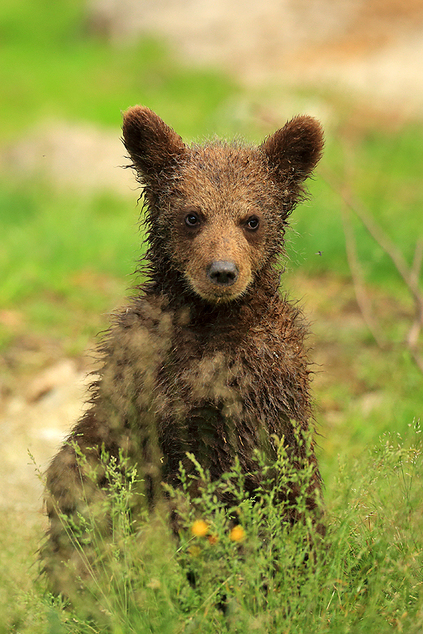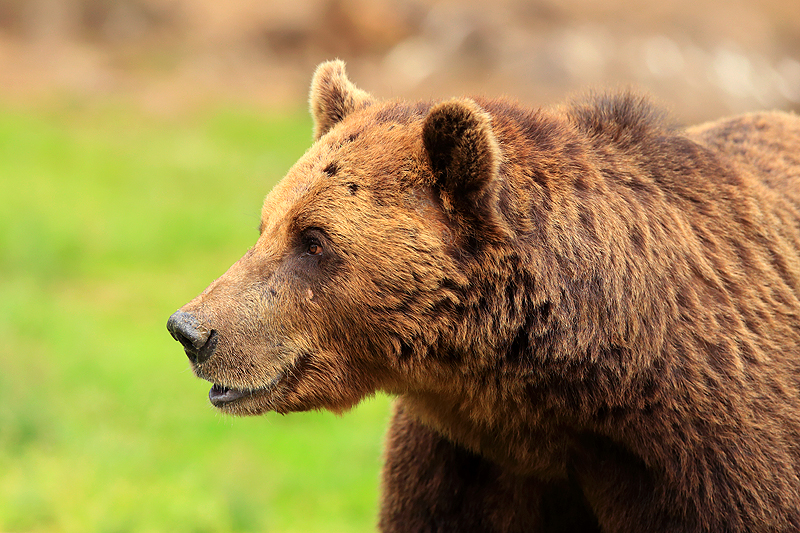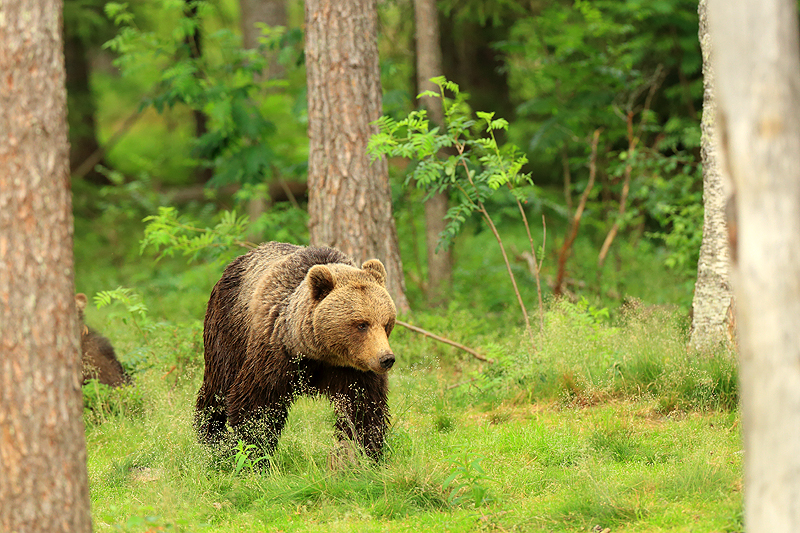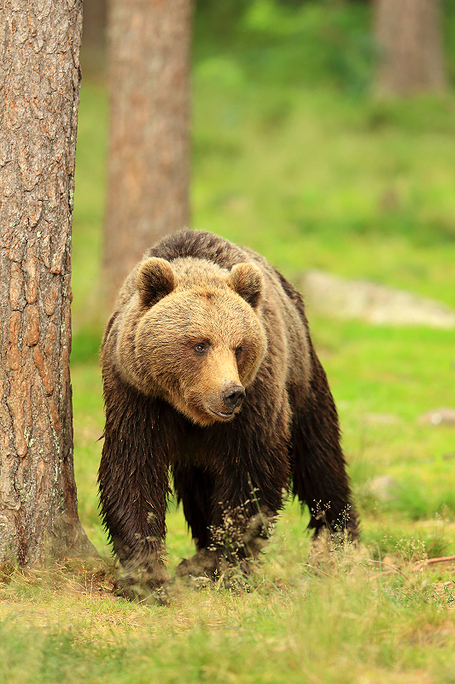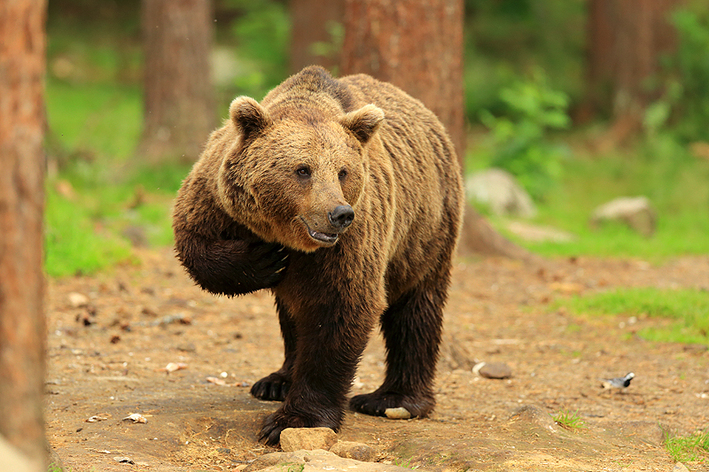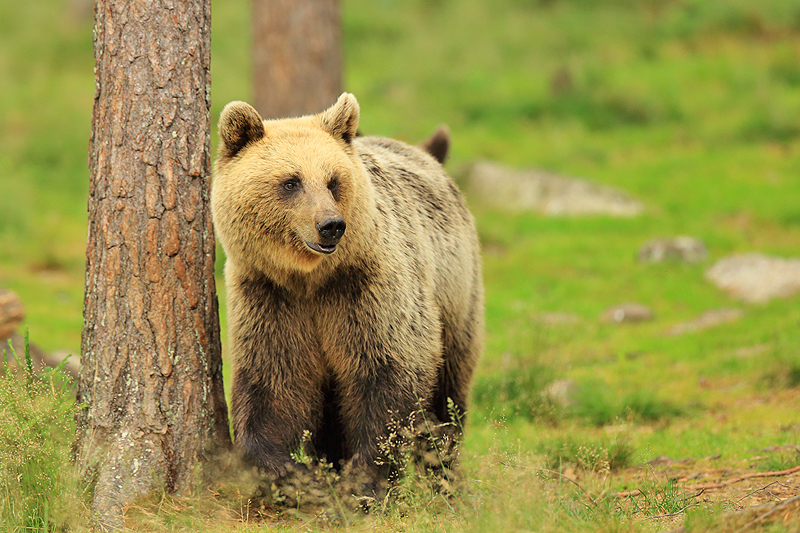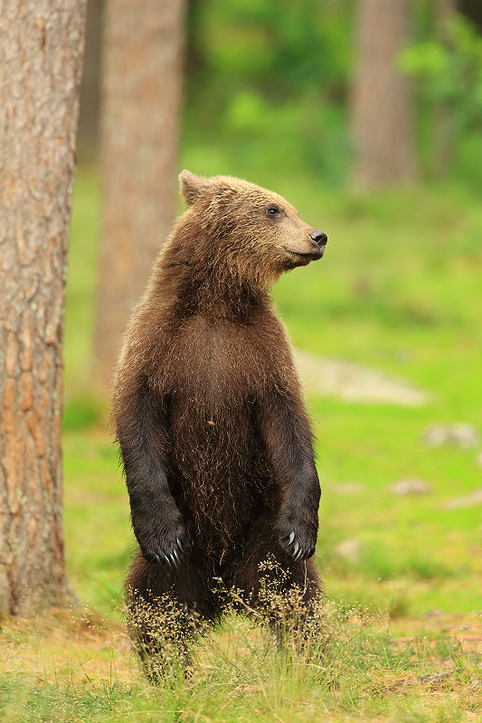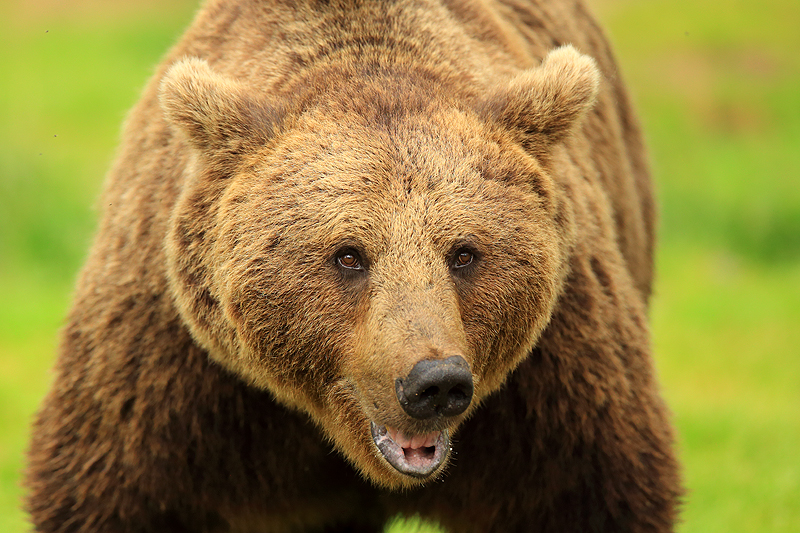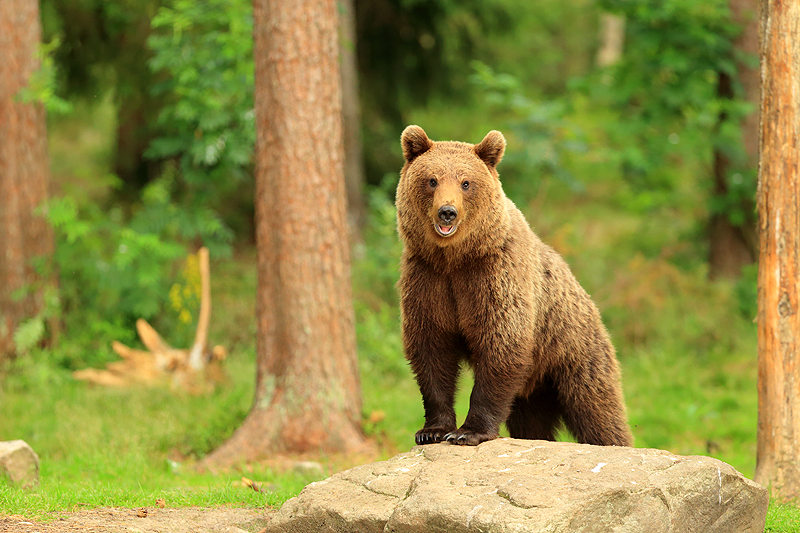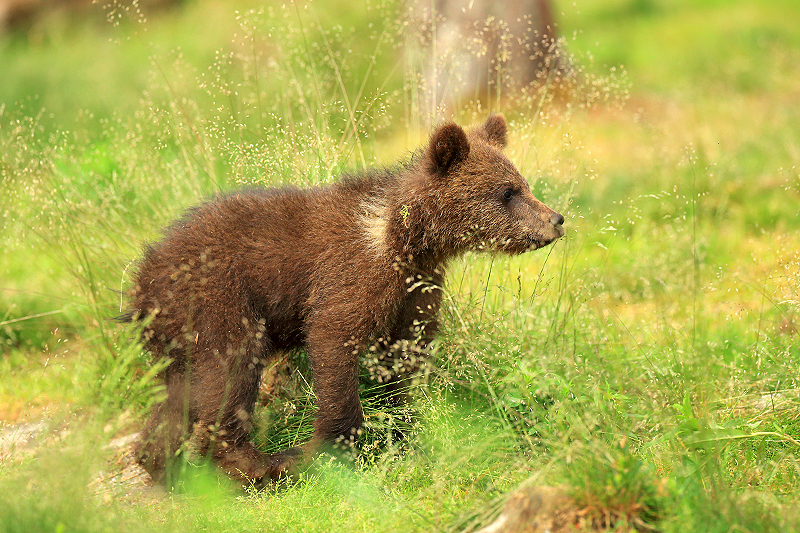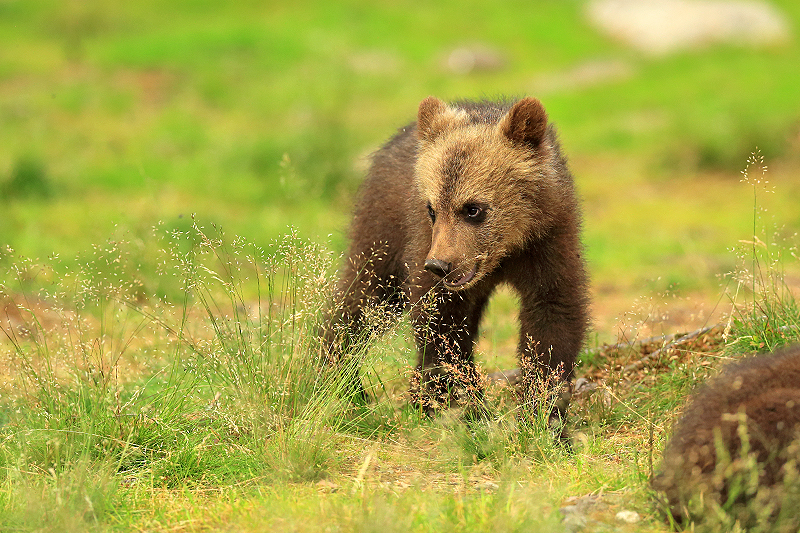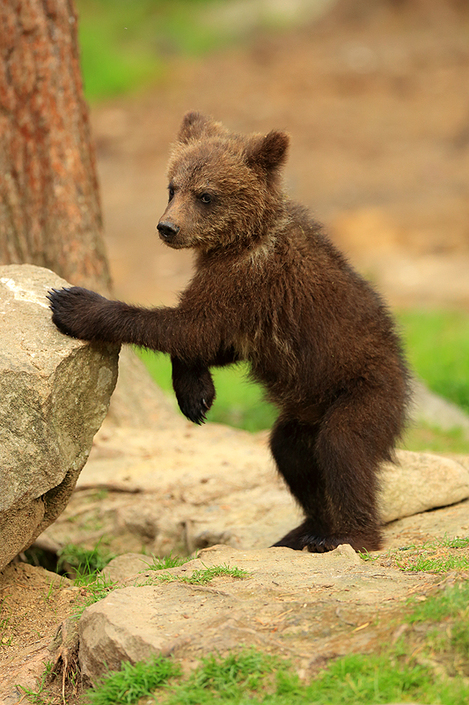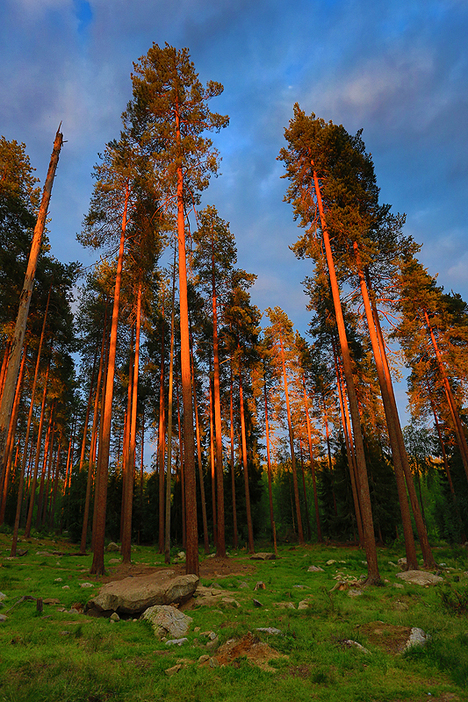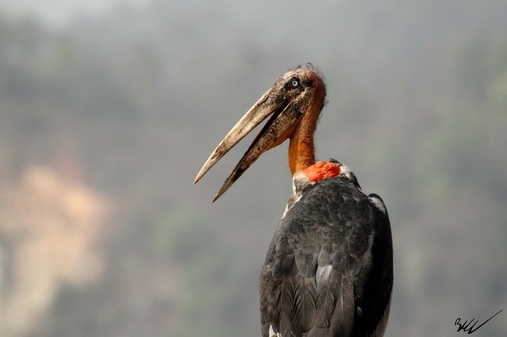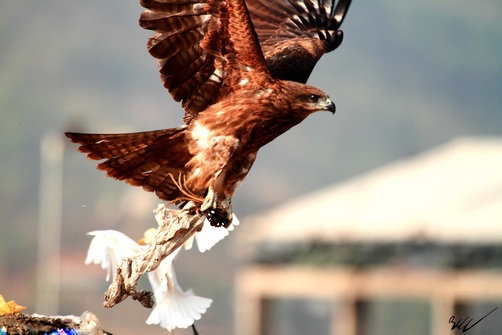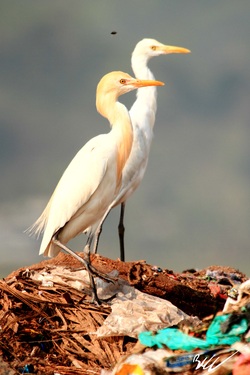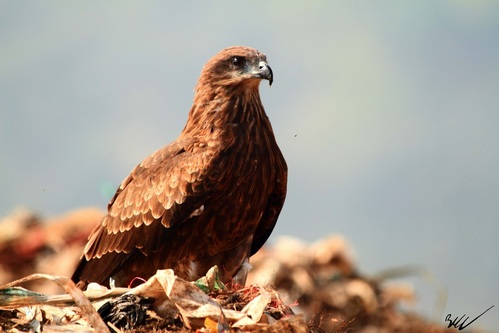|
As many of you who follow my work probably know, I work for a wildlife travel company called Naturetrek, and last week I got the opportunity to lead their photographic trip to Finland to photograph European Brown Bear. It was my first time in Finland, and it was also my first time to photograph bears (having only seen Black Bear briefly in Canada). So after exploring the forest around the fantastic Martinselkosen lodge (where I was lucky enough to see a Beaver), we ate our late lunch in readiness for our first long night in the hide. The advice to bring a warm fleece really was not applicable for this trip, the temperatures where in their high twenties and after the 2km walk to the hide everybody had certainly worked up a sweat. It is worth noting that one must have a really good quality insect repellant as well as covering up on the walk to the hide! We arrived and there, less than 20 yards away (whilst we were still on foot), was a full grown bear, nothing between us and it ... a wild Brown Bear!!!!! I honestly could not believe it, we shuffled into the hide as quietly as we could and all rushed to get our camera gear ready. Within moments there were a multitude of bears coming to find the food that Martinselkosen leave out for them. This location is right on the edge of the Russian border and they are fed dog biscuits and salmon, only enough to supplement their diet so that they do not become dependent upon it. Except for the pesky gulls that turned up, and seemed to eat nearly all of the salmon, there was a quick appearance from a Black Kite - swooping down and grabbing a piece of fish before flying up into the tree tops. Anyway enough text for now I know, you want to see the bears ... so here they are for you: The bears come and go in waves and more often than not, in family groups as mothers bring their cubs to fatten up! At times there were up to 10 bears (including cubs) all feeding around the area. (By the end of the night we reckon we had seen around 30 individual bears.) As some came in, some would leave and this meant the first few hours in the hide went very quickly indeed ... almost non stop action from the very first moment at 5pm until nearly 11pm. The youngest cubs were definitely the crowd pleasers but the behaviour of the adults and the pecking order was very obvious to see. It was all rather fascinating as well as extraordinarily exciting! The other thing that was very noticeable at the time and particularly in the photographs, is the huge variation in the bear's colourations. Some individuals were definitely darker than others, and some such as the female above were almost entirely "blonde". The cubs also showed a diverse range of markings and colourations which, of course, would be inherited from their parents. As I said earlier, the cubs were definitely the stars of the show and everybody loved watching their antics as the evening went one. One thing people particularly wanted to see was the cubs climbing up high in the trees but on this occasion we were not treated to this amazing sight. You'll have to read my next post to see what happened the night after! Finally, one last image for you showing what the forest looks like in the midnight sunshine. As the area is not too far from the Arctic Circle there is 24 hours of light on offer and even at midnight on a clear evening you can get some incredibly good light! A photographers dream to a certain extent but the lack of sleep can certainly get to you if you decide to spend all night watching the bears!
3 Comments
We had our final breakfast on board our vessel, Charaidew, and everybody was given the choice as to whether they wanted to go and see the critically endangered Greater Adjutant Stork, which has a stronghold at Guwahati rubbish dump or stay on the boat. Some of the ladies in the group rejected the opportunity and decided to stay onboard but everybody else was keen to get a glimpse of these massive birds. We drove to the dump with the help of our minibuses and the first thing we saw when approaching the site, were hundreds of Black Kites circling above. Then as we reached the edge of the dump, we could see the Bangladeshi migrants, who have built their homes of rubbish and live among the rubbish, moving around the rubbish heaps. For some it was hard to see people living like this but unfortunately this is a relatively common sight in India and many other developing nations around the world.
Then we got our first sight of these rather ugly storks. They towered above some of the local women and I struggled to get a photo due to the minibus' movement. As we stopped and caught the stench of the dump in our nostrils (making everyone gag), one of the locals scared all the storks away so our photo opportunities were limited. The birds had flown deeper into the dump and one had to climb the rubbish to get closer, instead I focused on the Cattle Egret and Black Kites. After ten minutes or so most people had had enough of the smell and the tour leaders decided we should return to the boat to collect our belongings and make our way to the airport for our flight to Kolkata (Calcutta). The flight went without any difficulties and we transferred to the Hyatt hotel in Kolkata. This was where I said goodbye to the group and I was to catch the Azur Hind Express train to Nagpur, in central India. My driver and local guide got me to the station safely and found out that my train was delayed by 7 hours. After a couple of hours I was at a hotel, close to the station, for a few hours rest. The drama was to continue the following morning. |
AuthorBret Charman Archives
July 2024
Categories
All
|

